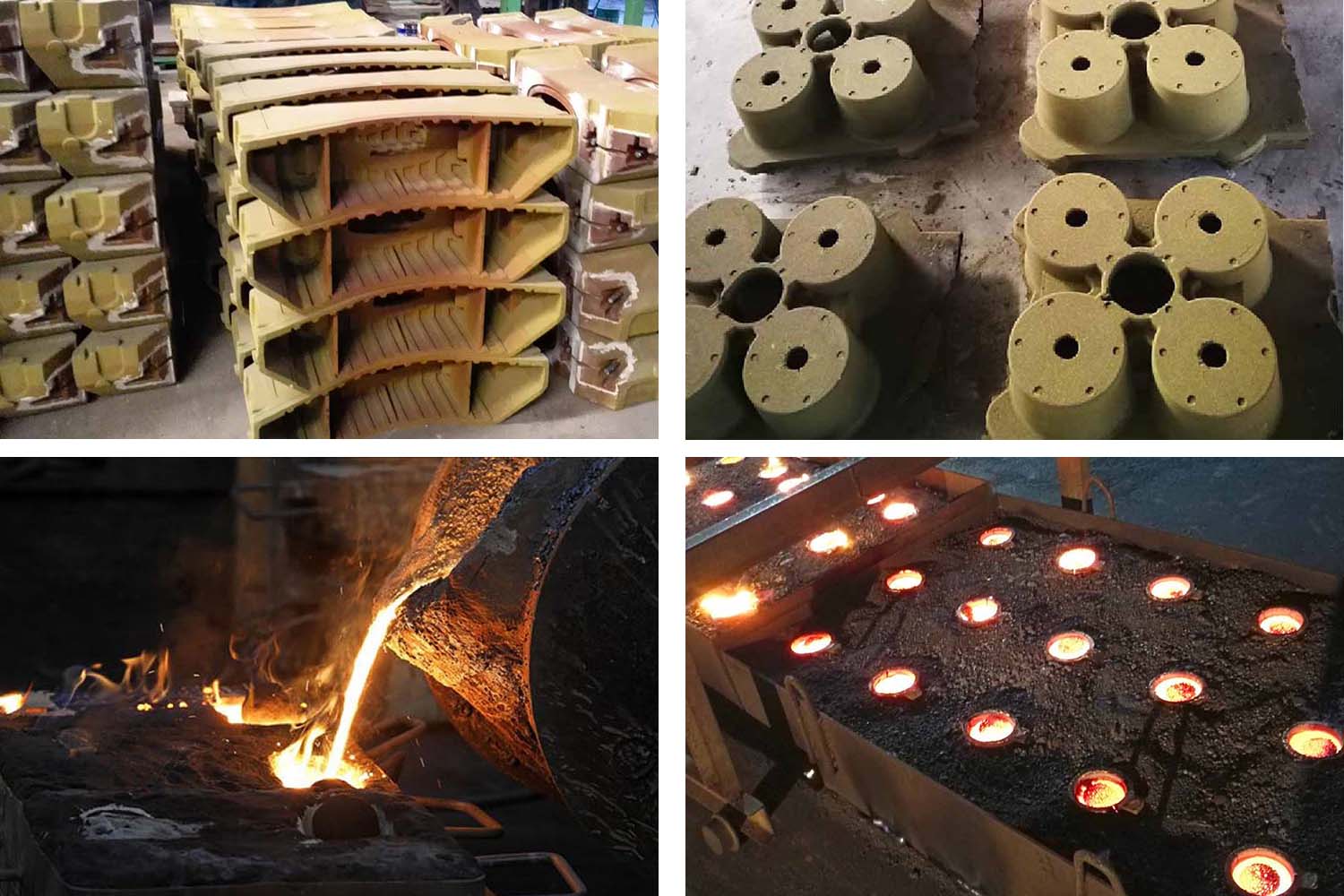Malleable cast iron is obtained by pouring molten iron with a certain chemical composition into white blanks and then treated by annealing. Graphite in malleable cast iron is mainly flocculent and sometimes a small amount of pellets. The main matrix structure of malleable cast iron is ferrite and pearlite. According to different heat treatment conditions, malleable cast iron can be divided into graphitized annealing malleable cast iron and decarburization annealing malleable cast iron.
The normal temperature mechanical properties of malleable cast iron are close to that of nodular cast iron with the same matrix. Under low temperature conditions, the impact toughness and cutting performance of malleable cast iron are better than those of nodular cast iron. Malleable cast iron castings are widely used in construction, automobiles, tractors, agricultural machinery and other fields. Malleable iron castings are often used for casting pipe connections, construction fasteners, elbows, tees, valve bodies, wrenches, jack shells, leaf spring supports, brackets, axle housings, engine connecting rods, rocker arms, etc. The heat treatment of malleable cast iron mainly includes graphitization annealing and decarburization annealing.
Properties of Malleable Cast Iron
1. Mechanical Properties
The ratio of yield strength to tensile strength of malleable cast iron is close to that of ball milled cast iron, but is about 60% ~ 80% higher than that of carbon steel. Malleable cast iron is more suitable for working at low temperatures than ball milled cast iron.
2. Process Performance
Because the content of carbon and silicon of malleable cast iron is low, the eutectoid degree is small, and the casting billet crystallizes according to the metastable system, the casting performance of malleable cast iron is poor, and the casting is prone to casting defects such as failure to pour, shrinkage cavity, shrinkage porosity, and cracks. In order to prevent these defects, measures need to be taken such as increasing the pouring temperature, method runners, increasing high pressure heads, adding risers, installing chilled iron, and improving the collapsibility of molding sand and core sand when designing the casting process.
3. Machining Performance
Ferritic malleable cast iron has low hardness, and its cutting performance is better than gray iron castings and free-cutting steel. Therefore, ferritic malleable cast iron is a material with the best processing performance among iron-carbon alloys. Pearlitic malleable cast iron has higher hardness and slightly worse cutting performance.
4. Welding Performance
Black-hearted malleable cast irons and pearlite malleable cast irons are generally not suitable for welding, because brittle white mouths will be produced in the welding zone. The white mouth will crack under welding stress. For castings that bear relatively small tensile, bending, and impact loads, or are mainly used to bear compression and small torque, if welding is required, the castings need to be preheated before welding, and heat preservation and slow cooling are required after welding. When necessary, re-annealing is required to eliminate cementite and stress around the weld. However, the white core malleable casting has good welding performance, so it is also called weldable malleable cast iron.
5. Abrasion Resistance
The wear resistance of pearlite malleable cast iron is better than that of ordinary carbon steel. Therefore, pearlite malleable cast iron is suitable for casting parts that have certain requirements for strength and wear resistance. Through quenching heat treatment, the hardness of malleable iron castings can reach 60 HRC, and its wear resistance can be equivalent to that of low-alloy steel. However, ferritic malleable cast iron is not suitable for wear-resistant parts.
6. Heat Resistance
The heat resistance of ferritic malleable cast iron and pearlite malleable cast iron is better than gray cast iron and carbon steel, and the heat resistance of ferritic malleable cast iron is better than that of pearlite malleable cast iron.
7. Shock Absorption
Due to the influence of graphite shape, malleable cast iron has lower shock absorption than gray cast iron and better than ductile cast iron and cast steel. Under lower stress, the damping performance of ferritic malleable cast iron is about the same as that of spheroidal milled cast iron, but under higher stress, the damping performance of ferritic malleable cast iron is about 3 times that of cast steel and 2 times that of ductile cast iron.

Post time: Mar-04-2021

